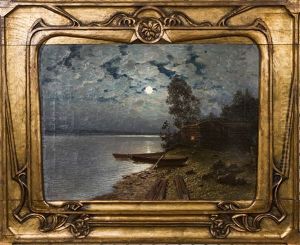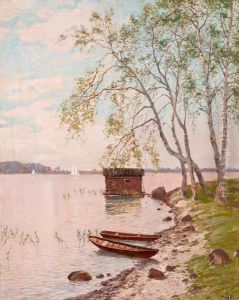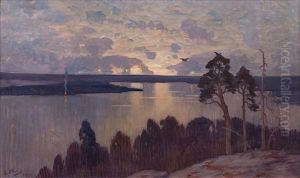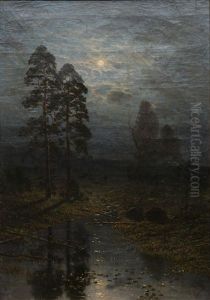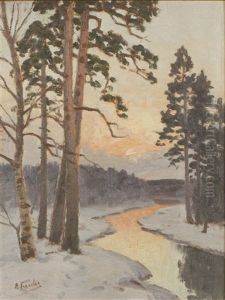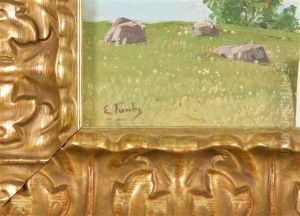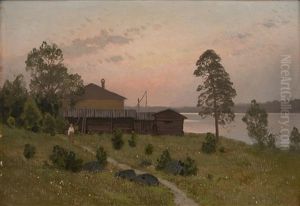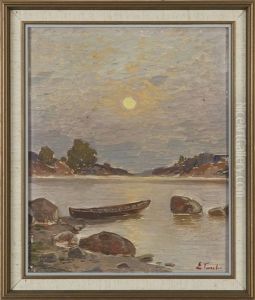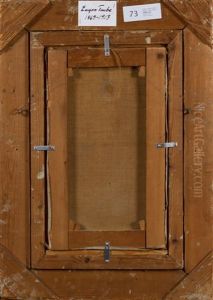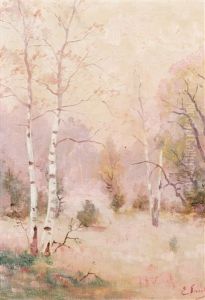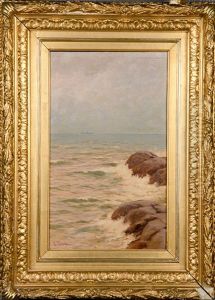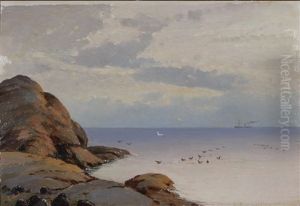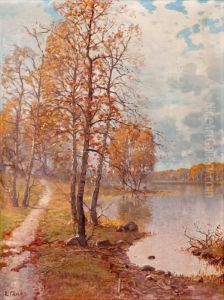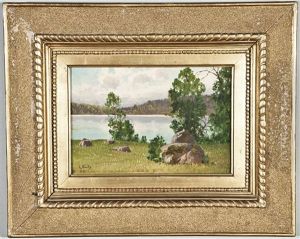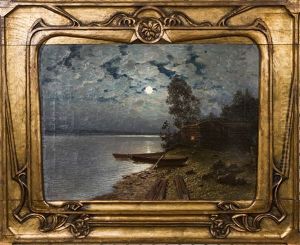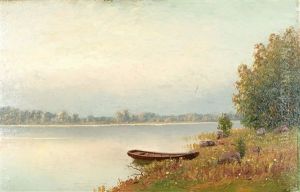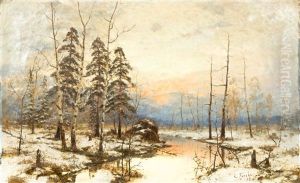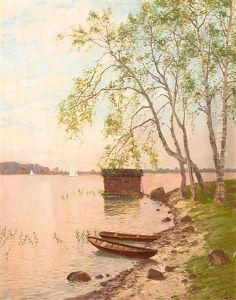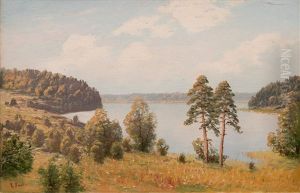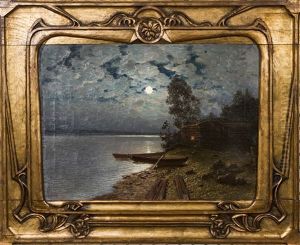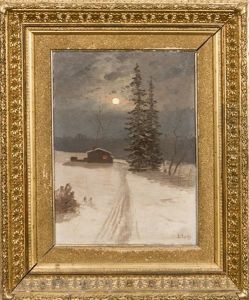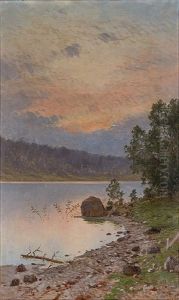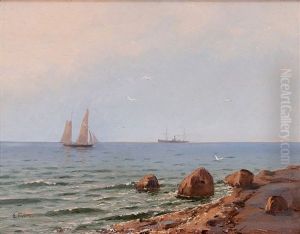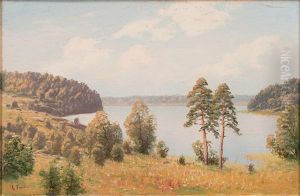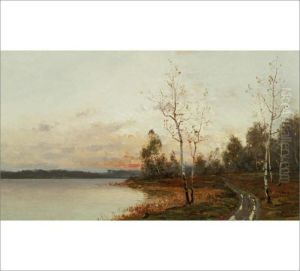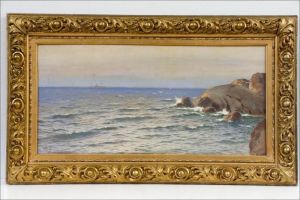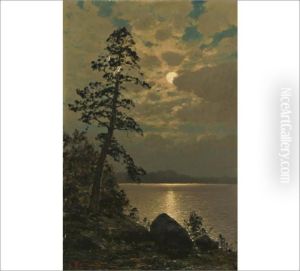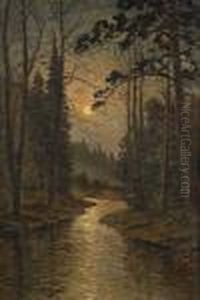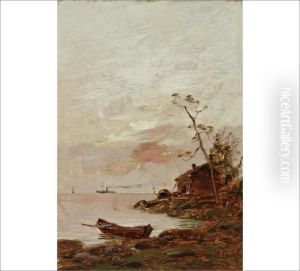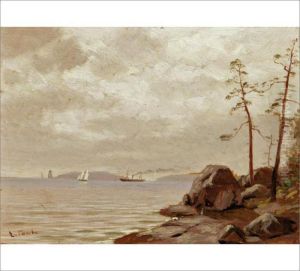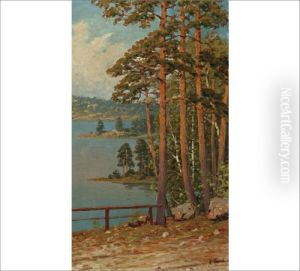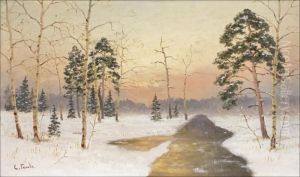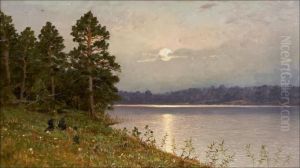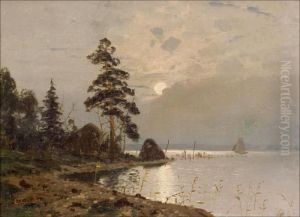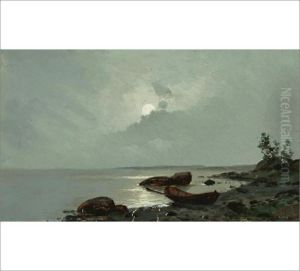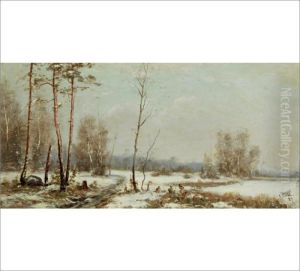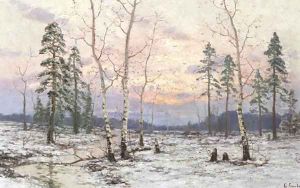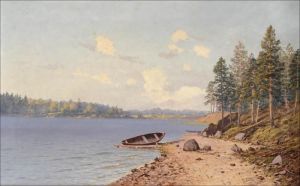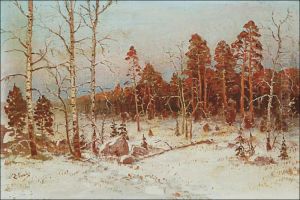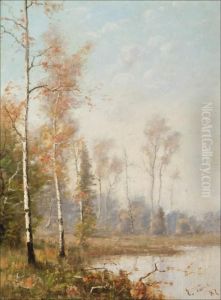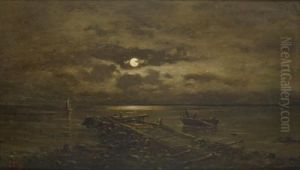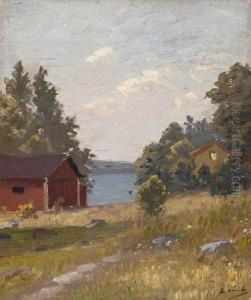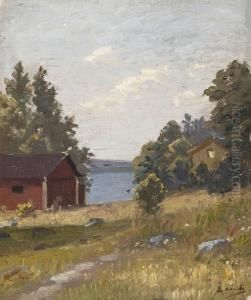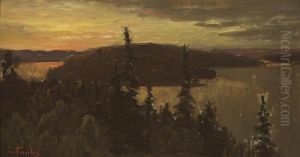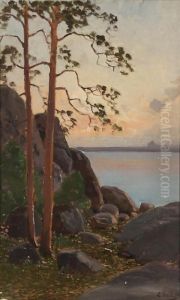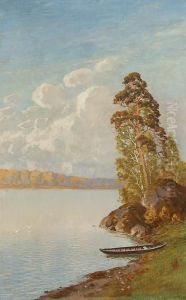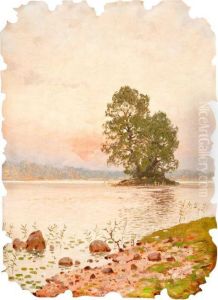Eugen Taube Paintings
Eugen Taube was a Latvian artist, born in 1879 in Riga, then part of the Russian Empire. Taube's work is characterized by its diversity, spanning a range of media including painting, graphic design, and book illustration. His artistic journey reflects the broader historical and cultural shifts of his time, particularly the impact of World War I and the subsequent emergence of Latvia as an independent nation in 1918.
Taube's early education in art was influenced by the traditions of the Baltic German community to which he belonged, a minority that played a significant role in the cultural and economic life of Latvia. He furthered his studies in art academies across Europe, which was a common practice among artists from the Baltic region seeking to broaden their horizons. This exposure to different artistic movements and styles, including Art Nouveau and Symbolism, is evident in his work, which often intertwines traditional motifs with modernist tendencies.
Throughout his career, Eugen Taube was deeply engaged with the Latvian cultural scene. He contributed to the development of Latvian art, not only through his own creations but also through his role as an educator and advocate for art education. His illustrations for children's books and literary works are particularly noteworthy, blending a keen sense of national identity with universal themes of folklore and mythology.
Unfortunately, Taube's life and career were cut short by the upheavals of World War II. He died in 1942, leaving behind a legacy that has since been recognized for its contribution to the identity and heritage of Latvian art. His works are preserved in national museums and galleries, serving as a testament to his artistic vision and the complex history of the region he represented.
